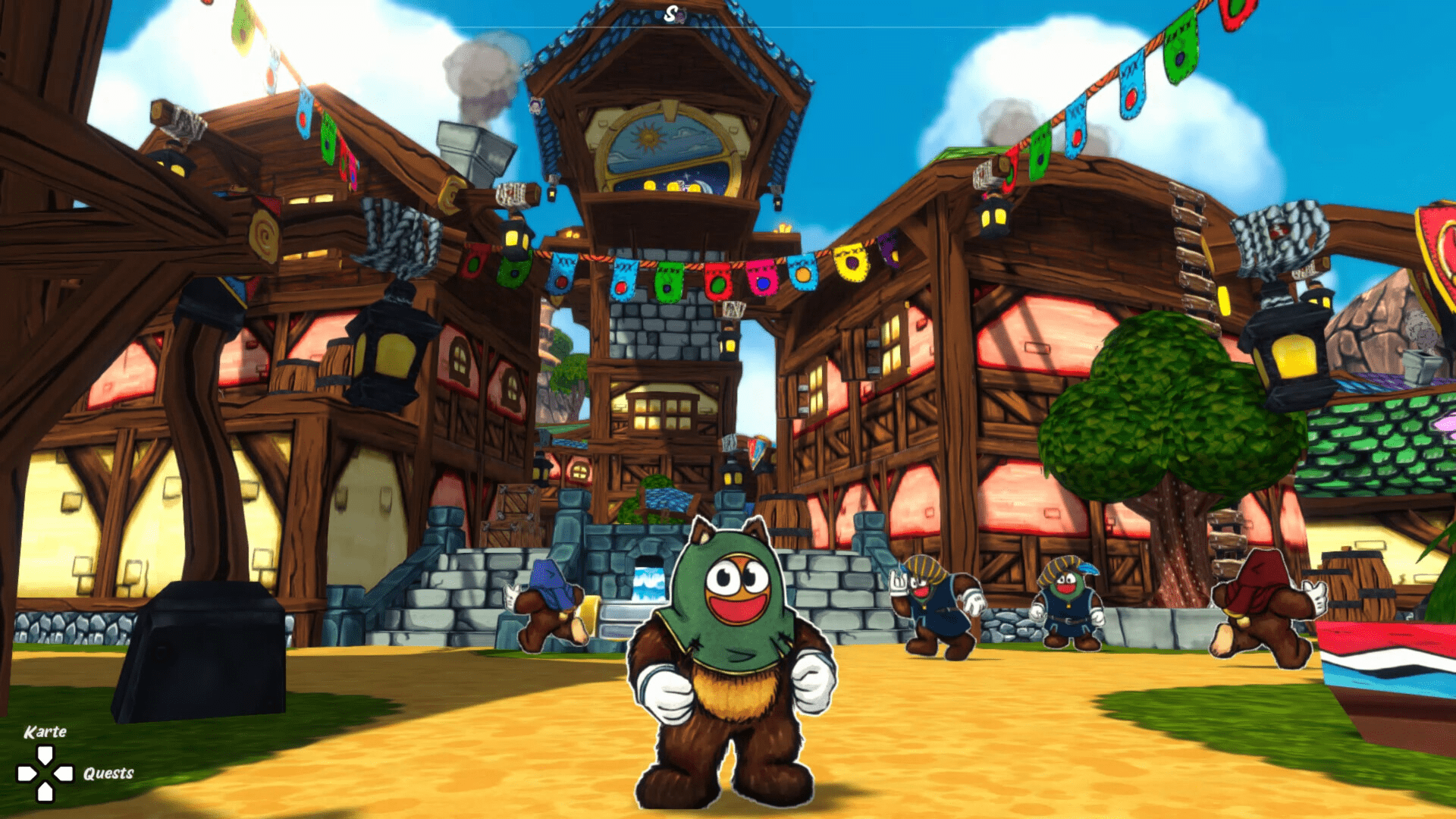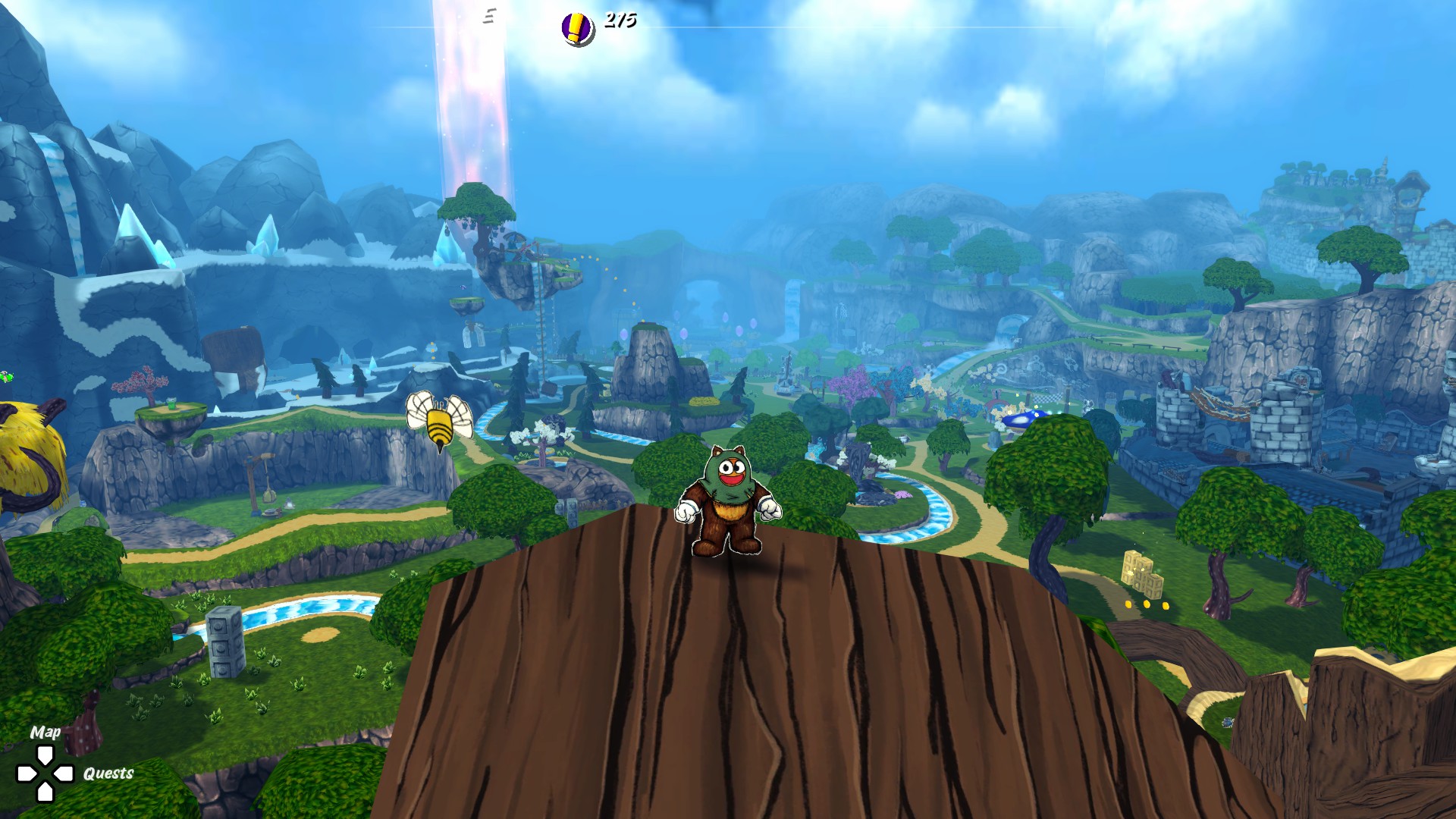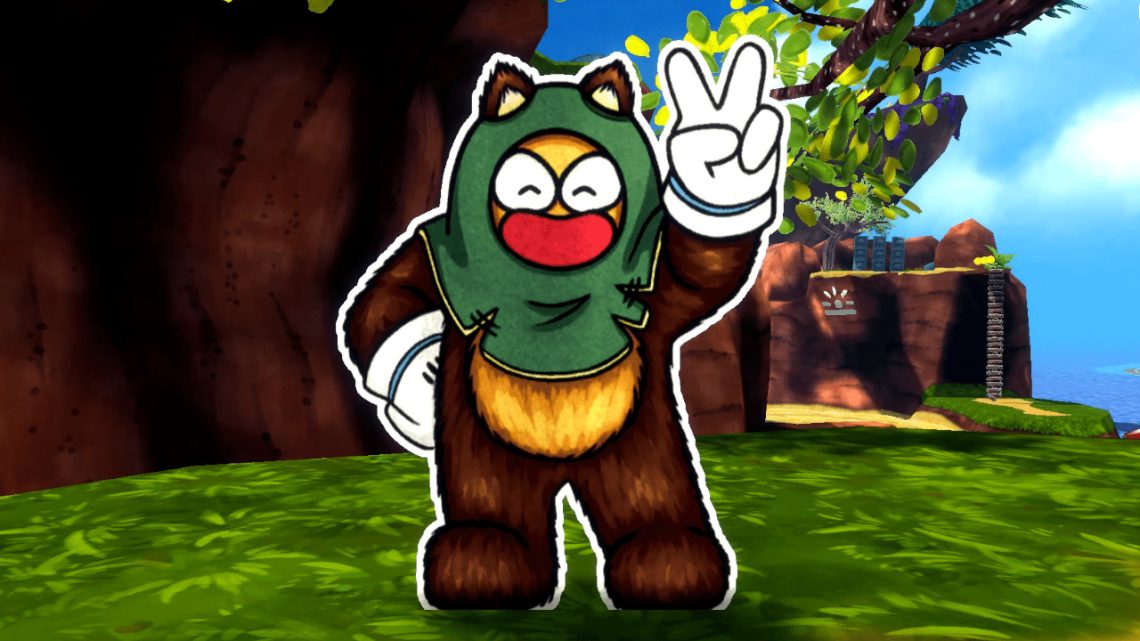Ruffy and the Riverside is a love-letter to the N64 era. The titular character brings to mind a similar bear-themed platforming hero, Banjo-Kazooie. The open-ended world emulates the playground feeling of Super Mario 64. The 2D cut-out style of the characters brings to mind Paper Mario. There are even hearts and heart containers that mimic classic 3D Zelda games. It is clear that the developers behind Ruffy know and adore the N64. The question is, can it meld all of these elements together, put its own spin on it, and create something just as magical as those oft-heralded games from the past?
Swapping expectations
One thing must be made clear. Ruffy and the Riverside is not a pure 3D platformer in the vein of Banjo-Kazooie or Super Mario 64. Platforming elements are light, unchallenging, and uninteresting. Ruffy is a puzzle game first, collectathon platformer second. Majority of your time playing will be spent using the swap ability to solve puzzles and collect trinkets. If you go into Ruffy and the Riverside expecting a sprawling 3D platformer, you will be disappointed.
The swap ability, which allows you to take any texture from any object or piece of the environment and slap it onto something else, is the cornerstone that all puzzles are designed around. While swapping any texture onto another surface would seemingly have endless possibilities, the application of such an ability in Ruffy is undercooked. The majority of the time, you will be swapping the same things over and over. Take some vines here and slap them on a waterfall so you can climb it, replace a river of water with a river of lava to burn wood blocking your path, change the texture of an iron box to wood so it will float, all of these on the surface seem inventive uses of the ability, but when you’ve done them a hundred times, it loses its magic. There are sparks of creativity, such as when you enter into a skateboarding competition and are allowed to use the swap ability to manipulate the scoreboard, or when you can take the image from a broken TV screen and slap it onto a working television to break it. These moments brought child-like joy, as if some kind of magic had just taken place. There just wasn’t enough of those moments.

The difficulty of each puzzle in Ruffy can also vary wildly depending on if you are on the main quest or a side quest. The main quest puzzles are cake-walks, they pretty much tell you how to solve everything. The side quests, on the other hand, can be real head-scratchers, challenging your understanding of the swap and how different textures interact with other pieces of the environment. Having the most difficult puzzles left as optional is a smart choice, but it swung the balancing too far and made the main quest mind numbingly easy to breeze through. This could be compensated by having interesting boss fights throughout the main quest. Unfortunately, there are only a few, and those that do exist don’t effectively utilize the swap mechanic at all causing them to be completely forgettable.

Big bear, little bee
Ruffy truly shines in its open-ended area where most of the game’s side quest puzzles can be found. It is a disjointed mess to explore with frozen tundras, haunted castles, lush forests, and bright greenlands all stitched and packed together like a tacky quilt. Regardless, it is the most fun you will have in Ruffy. It truly emulates the sandbox playground style of Super Mario 64, allowing you to explore around at your own pace, solve puzzles, gather collectables, and move on to the next story beat when you feel ready. In all honesty, if the entire game was an expanded version of this area, the experience would likely have worked better. This open area brings together all of the applications of the swap ability together in a way that the individual levels do not.
The more I think about Ruffy, the more I see lost potential. Ruffy and the Riverside is a solid puzzle platformer that needed more substance. The collectable elements always reward the same thing, gold, which is largely worthless, the platforming is much too light given the arsenal of moves Ruffy has access to, and the swap ability, while inventive, needed more interesting application. I would still recommend this game to anyone who has a love for the N64 era of games and won’t mind an easy puzzle-focused game. The developers clearly have a strong passion for that era of gaming and it shows. When comparing it to what it emulates, however, Ruffy can’t quite capture the same magic, leaving behind a fun, charming, but mediocre puzzle game. It has the makings of the next great smash-hit indie but does not deliver on that potential.
The Review
Fair








